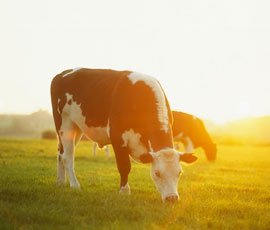Vet watch: round-up of regional health issues

Emily Robinson
Scarsdale Veterinary Group
Derby
Bulk milk tank is a simple, inexpensive and effective way of gaining a picture of the herd level of certain diseases on your farm.
These include, bovine viral diarrhoea (BVD), infectious bovine rhinotrachetis (IBR), leptospirosis and liver fluke.
Diseases for which a bulk tank sample is not useful include Johne’s disease and neospora.
Bulk milk tests look for antibodies so cannot distinguish between a natural infection or vaccination.
With BVD, however, there is a bulk milk test for the BVD virus itself, indicating any persistently infected (PI) animals in the herd.
One of the best ways to use bulk milk testing is to take regular samples and look for increasing levels of antibodies. This may help give an early warning sign.
Roger Scott
Scott Mitchell Associates
Hexham
We recently held a sheep worming workshop. It’s not easy grasping the concept of modern worming advice and avoiding wormer resistance.
The easiest route into the sustainable control of parasites in sheep (SCOPS) is to do a faecal egg count instead of just routinely worming.
The result should prompt a discussion with your vet on whether to worm, which wormer to use and which animals to worm.
Trust SCOPS – it will save you money, save you work and delay the day resistance arrives on your farm, if it hasn’t already.
Mel McPherson
Drove Veterinary Hospital
Swindon
As the world becomes more mechanised and affordable manpower on farms decreases, farmers are looking for ways to reduce their workload. Robotic milking parlours are a hot topic and have benefits on small and larger enterprises.
Once the cows are used to the new system and the farmer has got the hang of a new computer system a robot can often lead to increased milk production, decreased mastitis and lameness, and generally more content animals.
It also allows a farmer more time to watch the herd and deal with issues that may otherwise have been pushed aside.
Sales pitches can be persuasive, so ensure you speak to farmers who use them, not just about the daily running, but also the service received after the sale has gone through.
Rob Davies
Allen and Partners
Carmarthenshire
Every day, your cows are constantly giving you information about their health, wellbeing, nutrition and production.
Do you know what your cows are telling you? Always ask yourself what do I see? Why is this happening? What does this mean?
Rewarding results can often be obtained by implementing simple but effective changes to their environment and management. These are the basic principles of CowSignals.
The challenge is to pick up as many signs as possible, as soon as possible, before real problems occur.
This includes recognising symptoms of disease or injury early to improve likelihood of response to treatment and also evaluating risks and applying changes before victims are claimed.
Increasing pressure on farmers to produce milk more efficiently, to maintain and improve the welfare of their cows and to reduce the use of medicines on their farms, means knowing and using CowSignals has never been more important.
